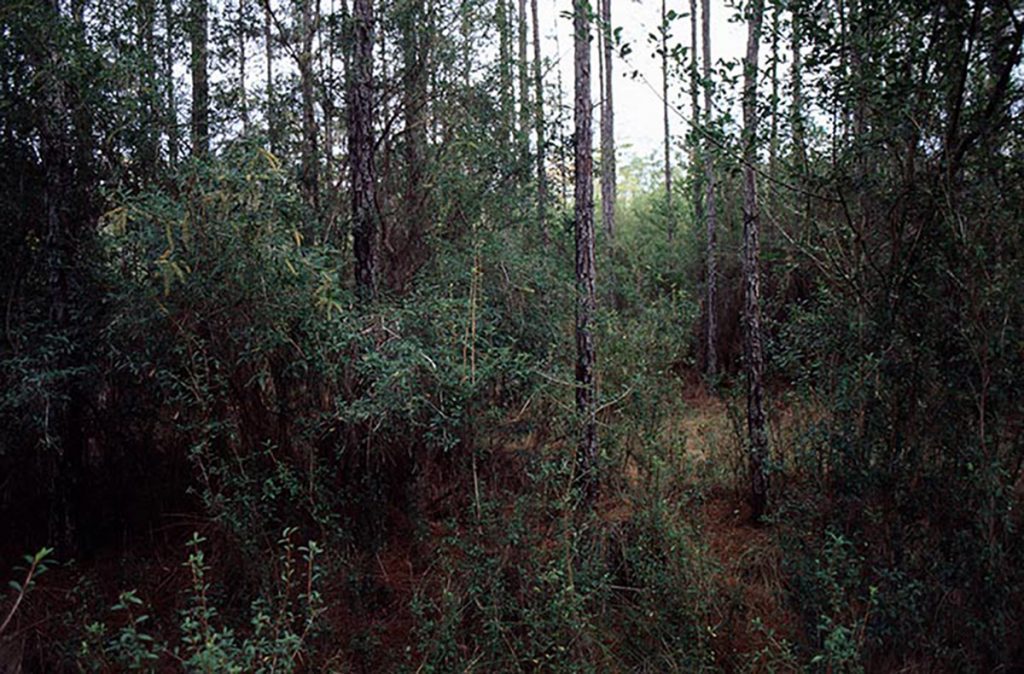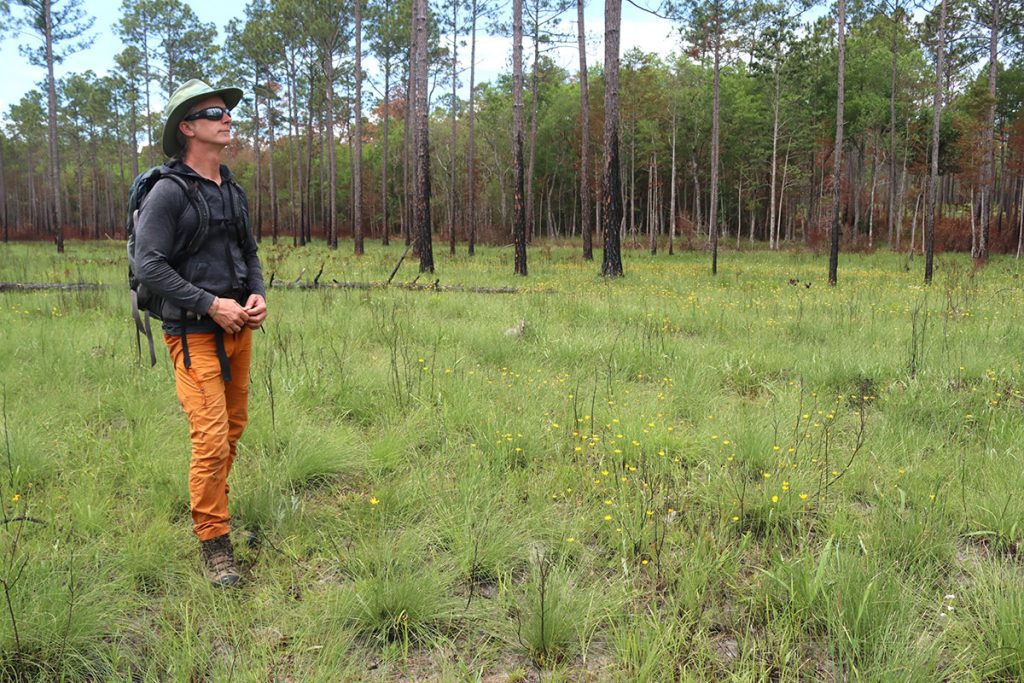Before today, I had no idea this part of Florida was called the Apalachicola Lowlands. We’re just a few miles from Sumatra, in the central panhandle, on a small preserve surrounded by the Apalachicola National Forest. It’s an area renowned for its wildflowers, in particular its diversity of carnivorous plants. It deserves a cool regional name. Today, Ryan Means is going to show us that there’s much more here than pitcher plants.
Ryan is the president of the Coastal Plains Institute, which operates the Apalachicola Lowlands Preserve. In 1992, CPI purchased 80 acres nestled within the National Forest. It’s just big enough for us to cover a lot of it on foot, and we’re here at good time.
“We put a fire down here on April 27th, and here we are five weeks later.” Ryan says. “And I am seeing five, ten species of flowering plants in bloom. And more with every week that passes.”
That’s five to ten species that he can see from the spot where he’s standing. As with any longleaf ecosystem, there are wildflowers we only notice when we’re right on top of them. Today, we’ll see a few that are rare, and a few not found outside of the central panhandle. And as on any of our adventures with CPI, we’ll see a few reptiles and amphibians.
Like a lot of our north Florida forests, this was once a timber plantation. Thirty years ago, hardwoods here had become dense between planted rows of slash pine. Restoring it has been a labor of love for the Means family.
Fire and Family
“When CPI first acquired this property back in 1992,” Ryan says, “just about the first thing that we did to the property was throw out a match, because it needed a burn. Big time. It was fire suppressed to the Nth Degree.”
The “we” to which he refers is his family. Dr. Bruce Means, Ryan’s father, founded the Coastal Plains Institute in the 1980s after serving as director at Tall Timbers Research Station. Ryan is the current president of CPI; his wife Rebecca is the director. Ryan’s brother, Harley Means, isn’t a biologist like the others (he’s the acting State Geologist for the state of Florida), but when it comes to prescribed burns, he’s part of the team. Working- and playing- at the Preserve is a multigenerational affair that includes spouses and children.
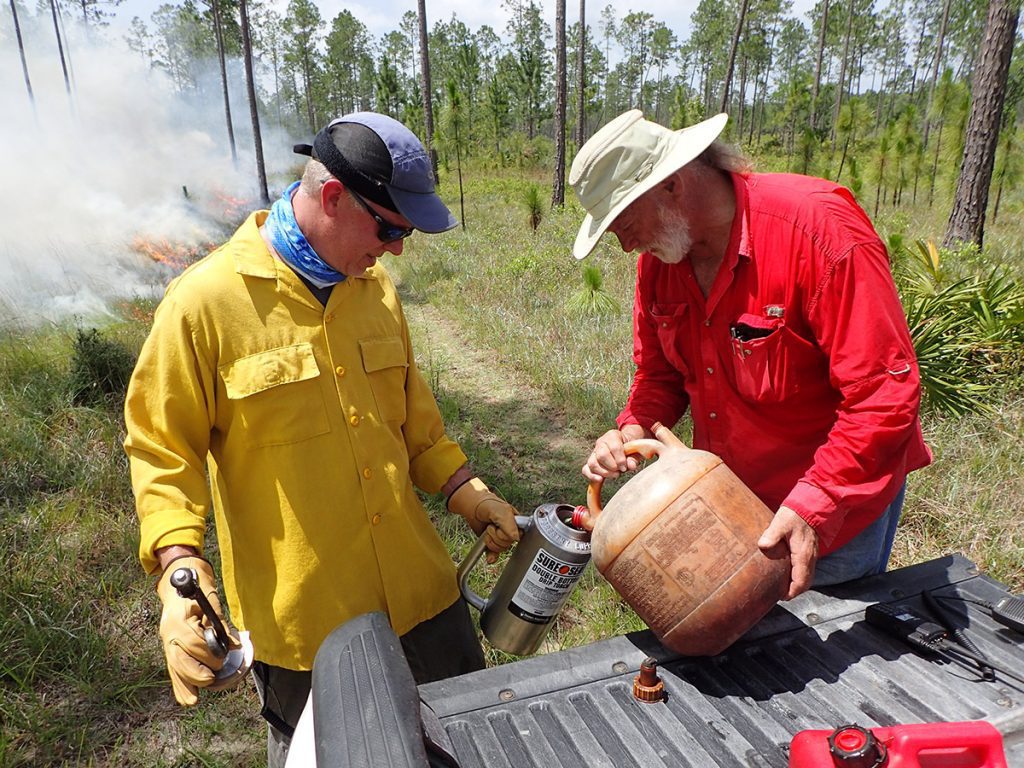
They seem to be having a good time in their burn photos. I imagine the actual burning is fun, but the transformative nature of fire in this landscape, the ways in which plants here respond, has to be satisfying as well. Ryan sounds proud when he sees ten species of blooming flowers just five weeks after a burn.
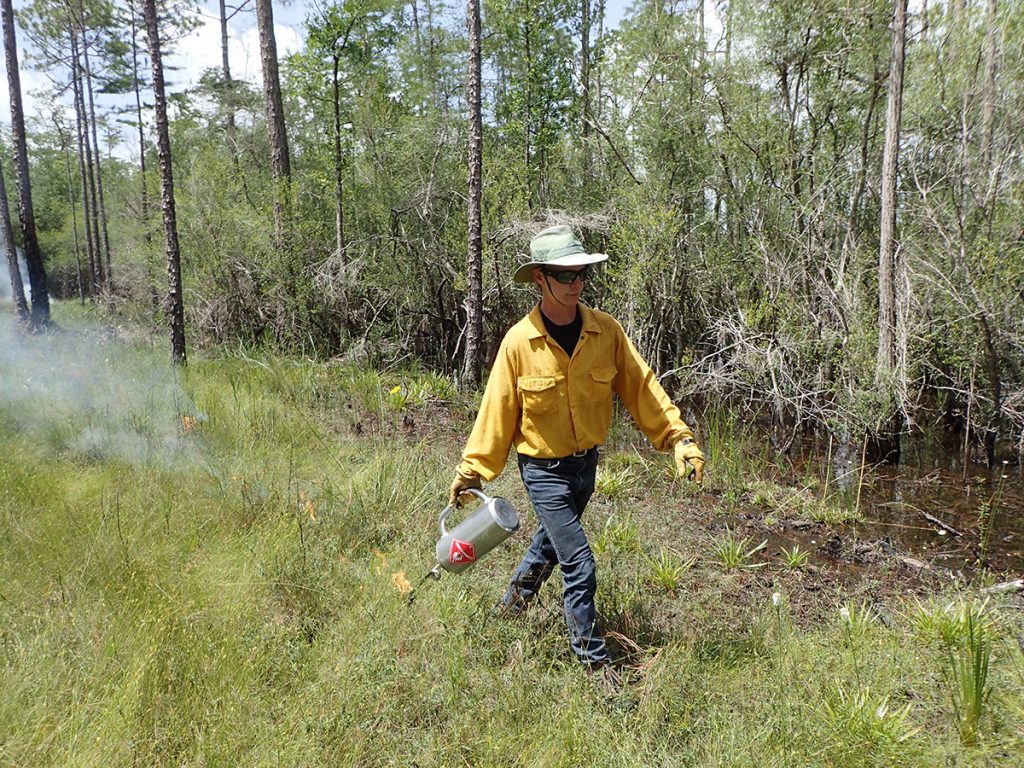
Restoring the Apalachicola Lowlands Preserve
Getting here was a years-long process. A forest full of large hardwood trees in its understory can be challenging to burn.
“Sometimes when you acquire land, and you want to restore it,” Ryan says, “and get fire back on the property, using a winter time burn can assist in that because it’s cooler out, and the heavy fuel load will not burn quite as hotly.”
Because winter burns are more manageable, many land managers prefer burning then. Not the Means family, though. Once they had opened up the understory, they started on their preferred burn regime.
“That happens to be fire that returns randomly every one, two, or three years,” Ryans says, “and applied or started… in a natural way in the months of May and June, primarily. So May, June, and every one, two or three years. That is how we apply fire out here on the CPI preserve, because that is what most closely mimics the natural fire regime of the southeastern U.S. longleaf pinelands.”
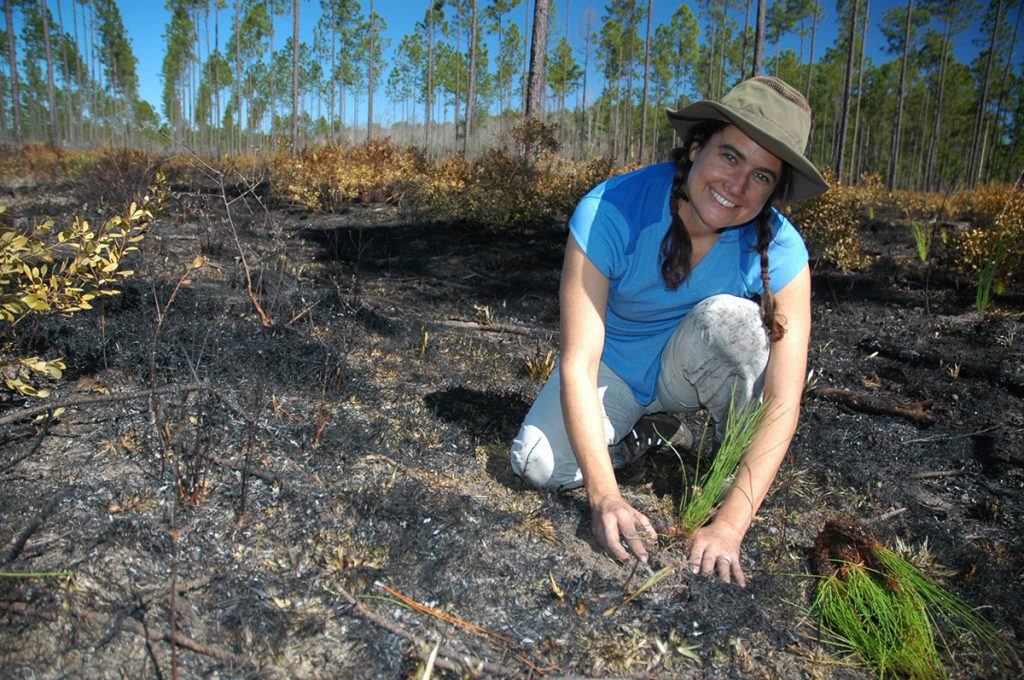
After opening up the understory, the next step was reintroducing longleaf pine. A lot of north Florida’s forested areas are converted slash pine plantations. Slash pine is fire tolerant. A forest of slash pine can carry fire and the understory plants can still thrive. Because it can function similarly to longleaf, there was no need to clearcut the preserve and start over. Instead, CPI has thinned its slash pine, and in 1999 planted 1,000 longleaf pine. Over time, these slower growing, longer lived trees will become mature, reproduce, and over time, perhaps, reestablish themselves as the dominant overstory tree.
Biodiversity in the Apalachicola Lowlands
Last year, we spent a bit of time exploring sandhill habitats just north of here in the Apalachicola Bluffs and Ravines region. This lies north of an ancient coastline called the Cody Escarpment. These sandhills are high and dry pine forests. Down in the lowlands, in what had once been ocean bottom, is a forest that had also historically been dominated by longleaf pine. Both habitats require burns every 2-3 years.
Here, though, water doesn’t immediately drain down through sandy soils. Mesic flatwoods can have standing water when it’s rainy, and be as dry as a sandhill when it’s not. Because of this, we see some different understory plants here than we do up north.
Another difference is the shape of the land. The Bluffs and Ravines region has drastic changes in elevation and steep slopes, with a wealth of different plant species occupying different microtopographies. This is a reason for the area’s high biodiversity.
The Apalachicola Lowlands is a flatter landscape. Ryan points out, though, a drop in elevation of just a couple of inches can create changes in plant communities here. The effect is more subtle than in the Bluffs and Ravines, but we see a collection of similarly rare and local plant species.
So, what will we find just five weeks after a prescribed burn?
Botanizing The Mesic Flatwoods
We start on a smaller section of the Preserve that the Means are waiting for the right conditions to burn. Almost immediately, Ryan becomes excited and rushes off.
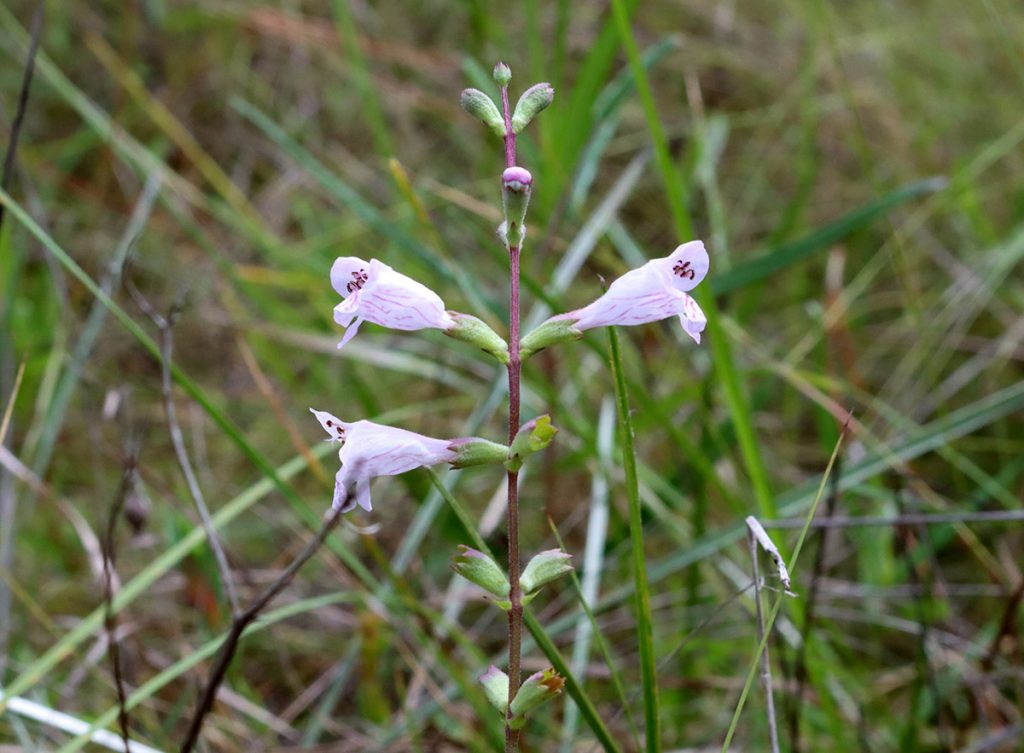
“Oh, this is an exciting one,” He says, crouching by a small wildflower. “This is Godfrey’s false dragonhead. And what a beautiful bloom. This is in the mint family. Oh, man. Look at that.”
Godfrey’s false dragonhead is listed as threatened in Florida, and is endemic to the central panhandle.
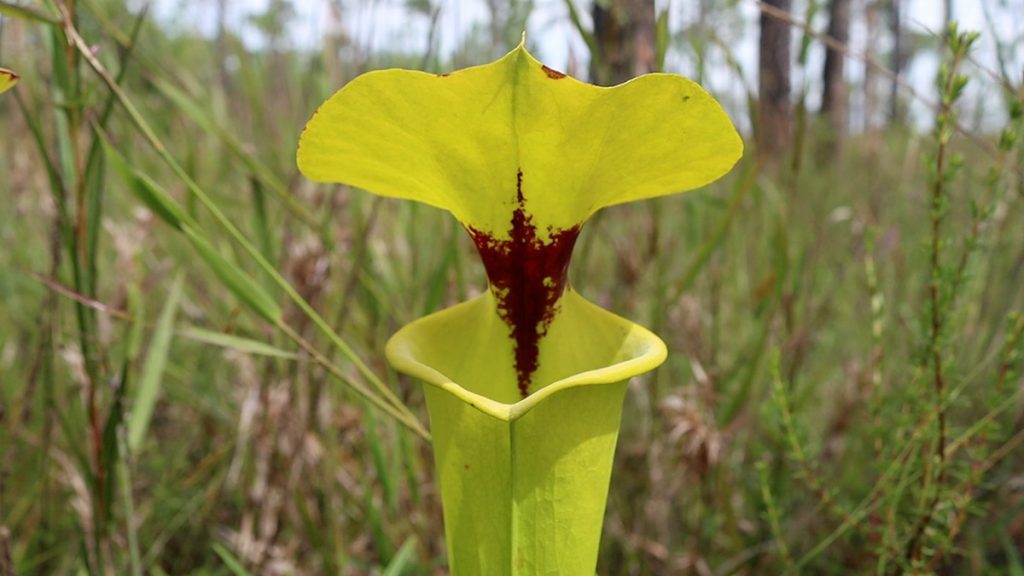
You can’t drive through this part of the Florida panhandle without seeing pitcher plants along the roadside and into the forest (it can be distracting for some of us). This is a variety of yellow pitcher plant with a red “throat,” which also goes by the name cutthroat pitcher plant.
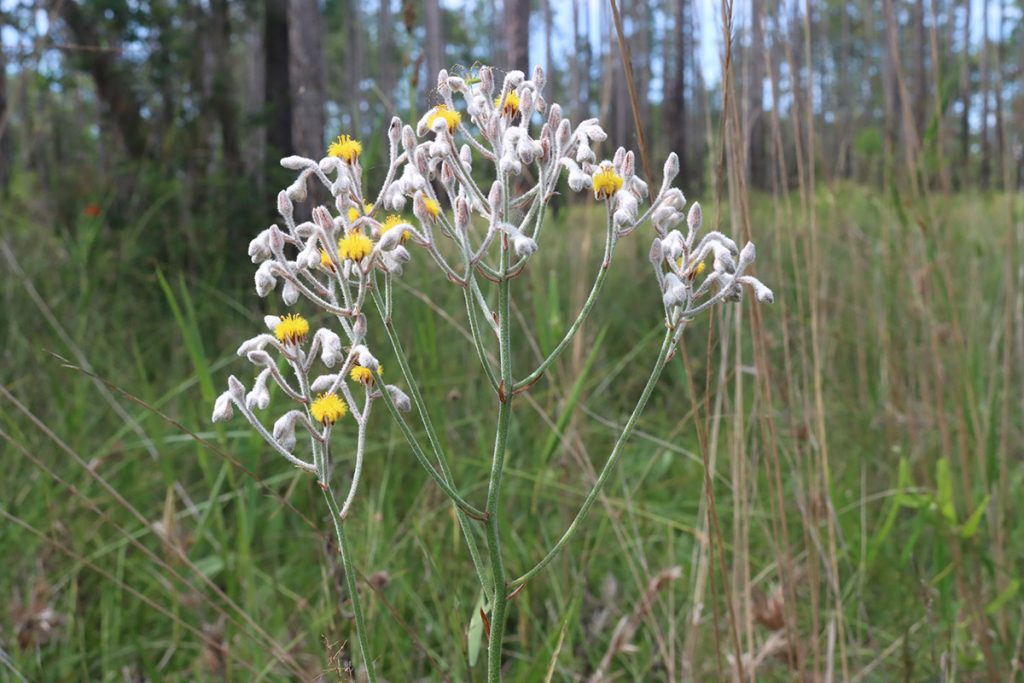
This is another common moist area wildflower, often found growing alongside pitcher plants.
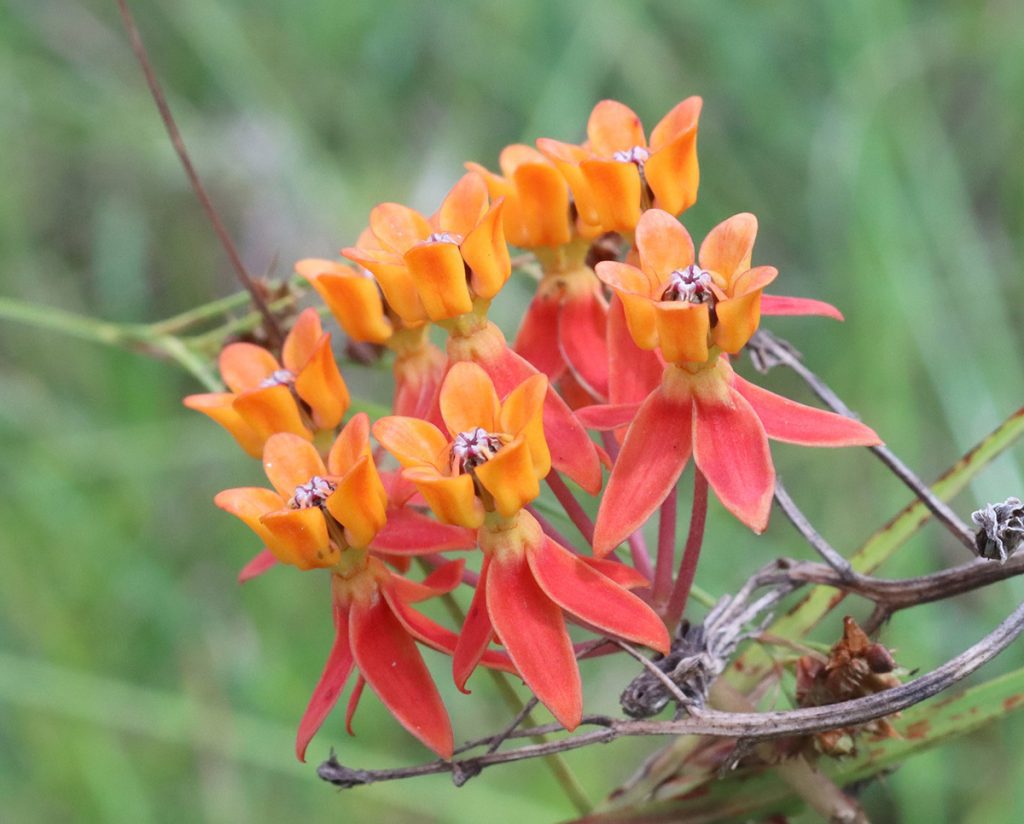
Before we get to Rowlett’s Creek, we see specks of orange in the landscape. As the name implies, fewflower milkweed doesn’t produce as many blooms as other milkweed species.
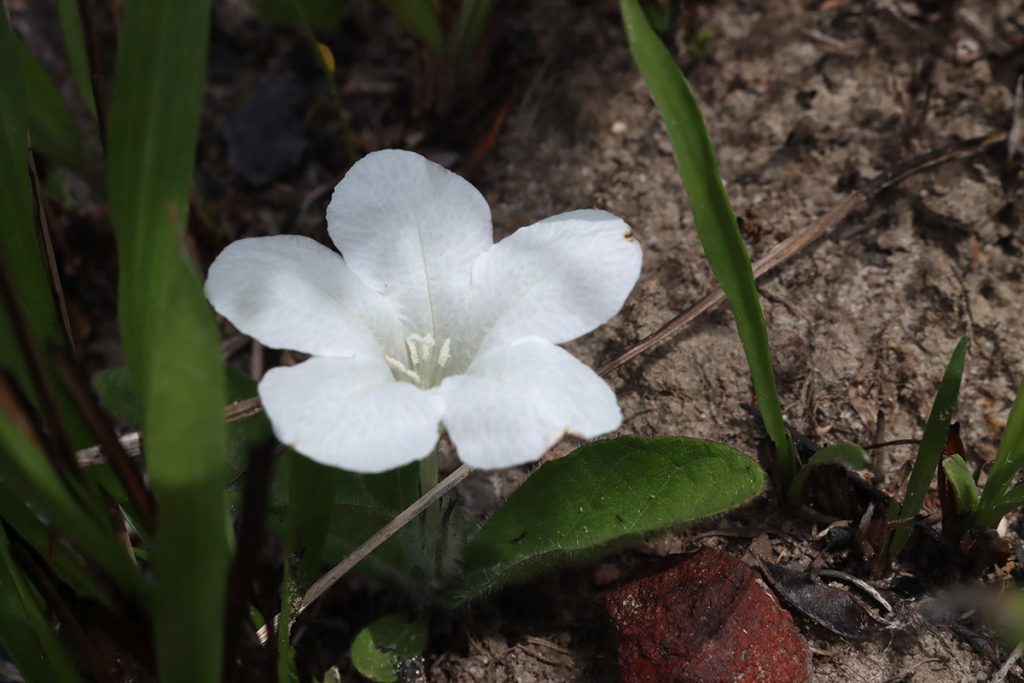
After we cross the creek, we almost walk right by this diminutive, low lying flower. Ryan has never seen this flower on the preserve before, but here’s another state-endangered wildflower- nightflowering ruellia.
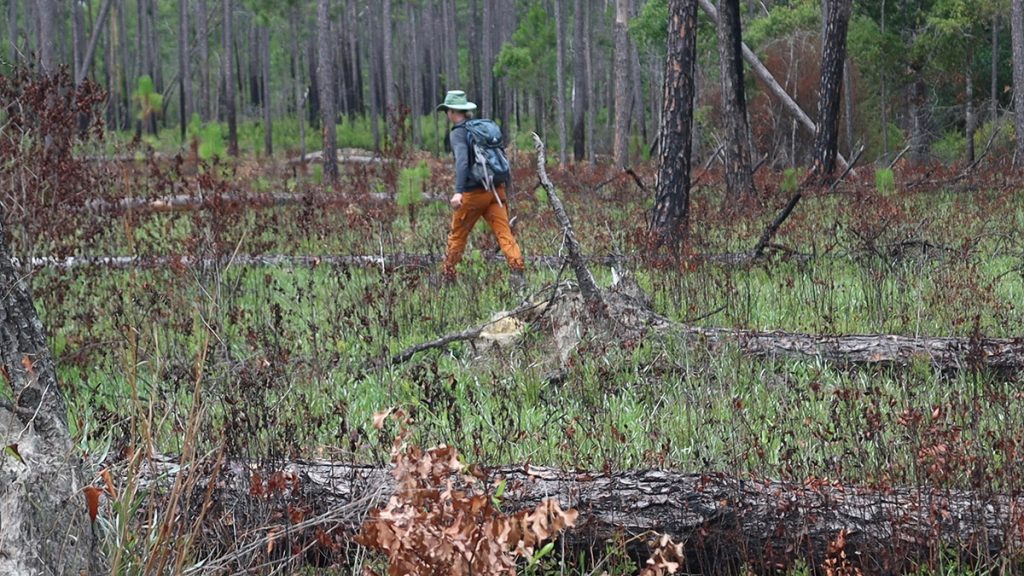
Down onto the Seepage Slope
Turning our backs to the ruellia, we take in the sight above. Contrast the dead leaves of the hardwoods with the fresh new growth on the ground. Without fire, those hardwoods would grow until they shaded out the grasses and herbaceous plants that make this a biodiverse habitat.
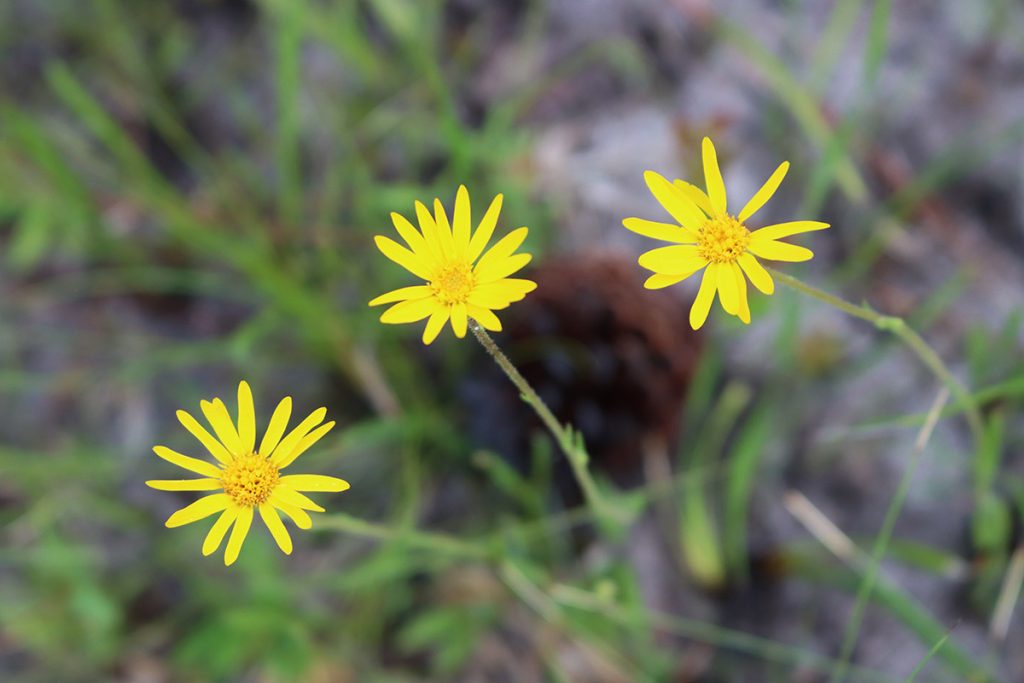
Soon, the trees all but disappear and we start seeing these yellow flowers everywhere. This is a silkgrass species, Pityopsis oligantha. Pityopsis aren’t true grasses, even if their leaves are grass-like. Silkgrasses are common wildflowers in our pinelands.
We’re now at the edge of a different habitat type.
“This is our prized seepage slope,” Ryan says. “I’m going to take you down to see one of the rarest plants out here in this whole Apalachicola Lowlands area.”
We visited a seepage slope on Nokuse Plantation a few months ago (it was actually the day before I shot this, but that’s how my postproduction schedule goes sometimes). I don’t want to be repetitive if you read that as well, so I’ll keep this part short.
Many of us know that Florida sits atop a large limestone aquifer. In much of the state, water passes freely down into it. In some places, however, a harder rock or clay layer lies directly beneath the soil, and water pools atop it. To the north of here, water percolates down those deep sandhills to reach this layer, and the pooled water trickles out into the Apalachicola River, and over time carves steephead ravines.
Like I mentioned earlier, the Apalachicola Lowlands is a flatter place with more subtle changes in elevation. There’s a similar rock layer beneath this spot, but here the water seeps out of a gentle slope in the land. Five months after a prescribed burn, there are a lot of plants in bloom. Like Ryan said, one of them is among the rarest in the region.
Botanizing the Seepage Slope
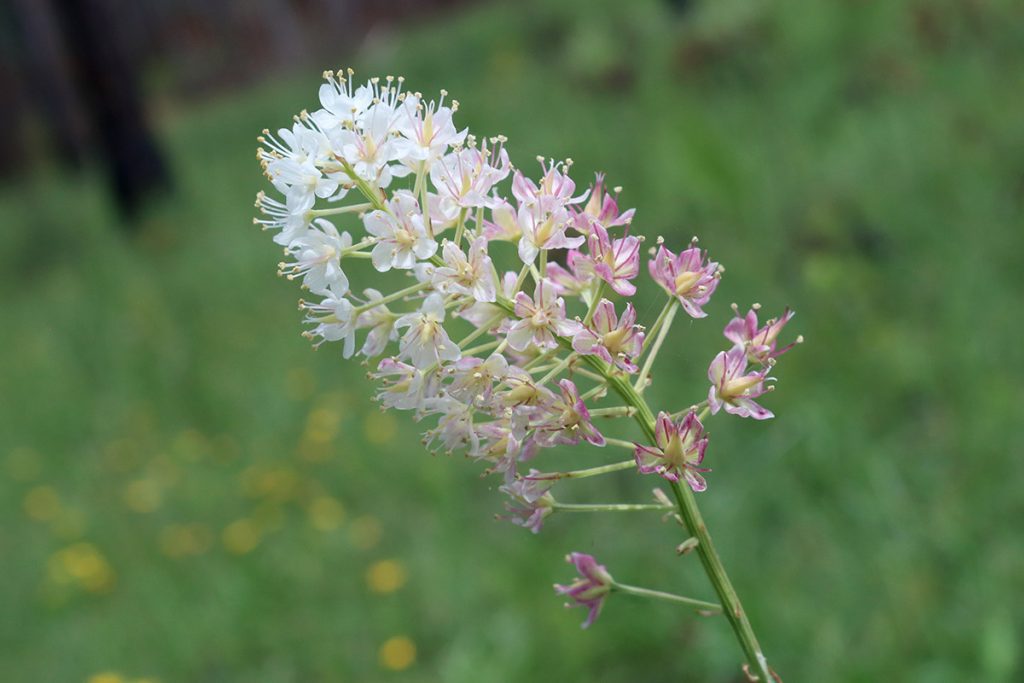
Ryan spots a white flower-head towering above the grassleaf goldenaster.
“Osceola’s Plume,” He says. “This one’s white. But as the flower ages, it eventually turns pink, and then reddish.” We quickly find an older flower.
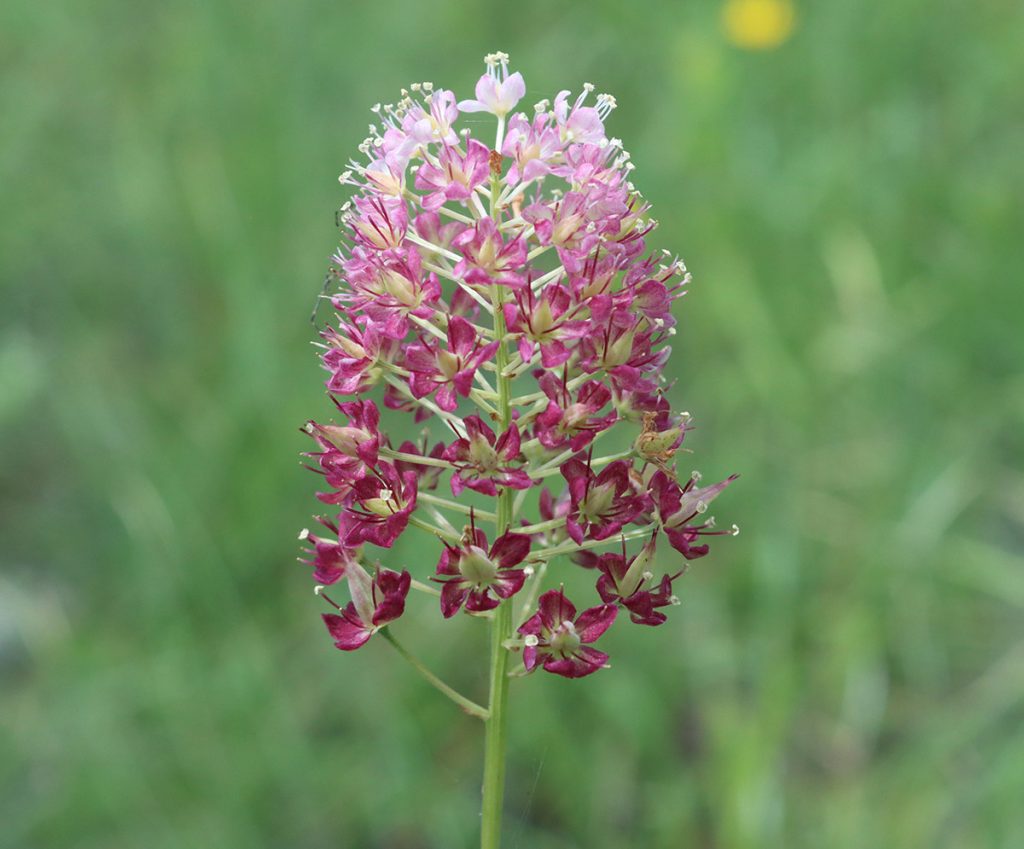
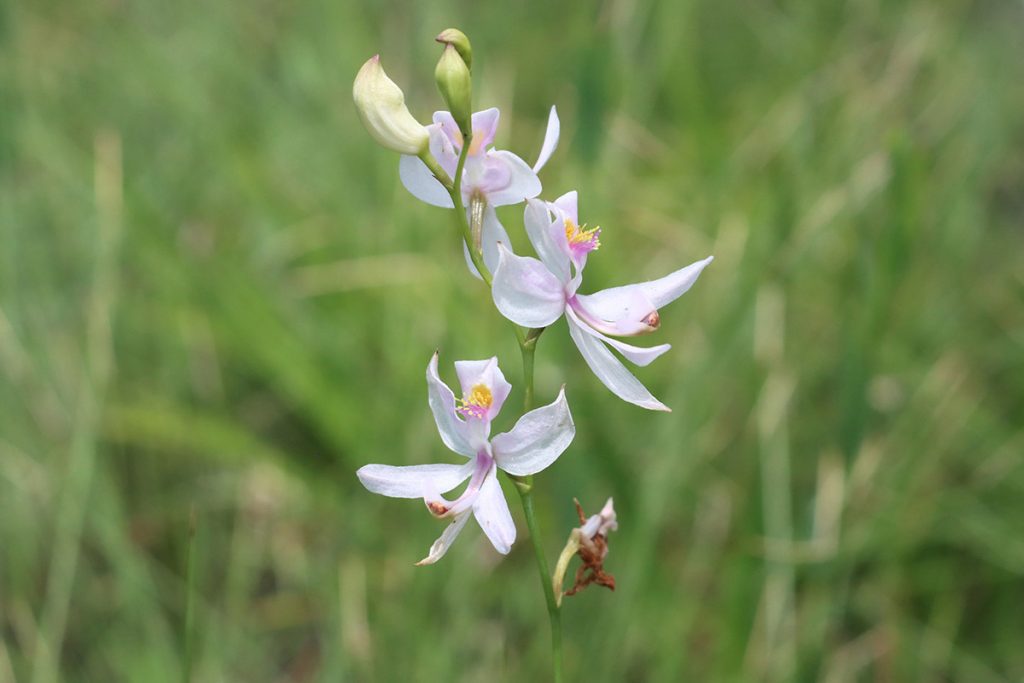
Grasspink orchids (Calopogon) are commonly found alongside carnivorous plants on seepage slopes. This is the pale grasspink.
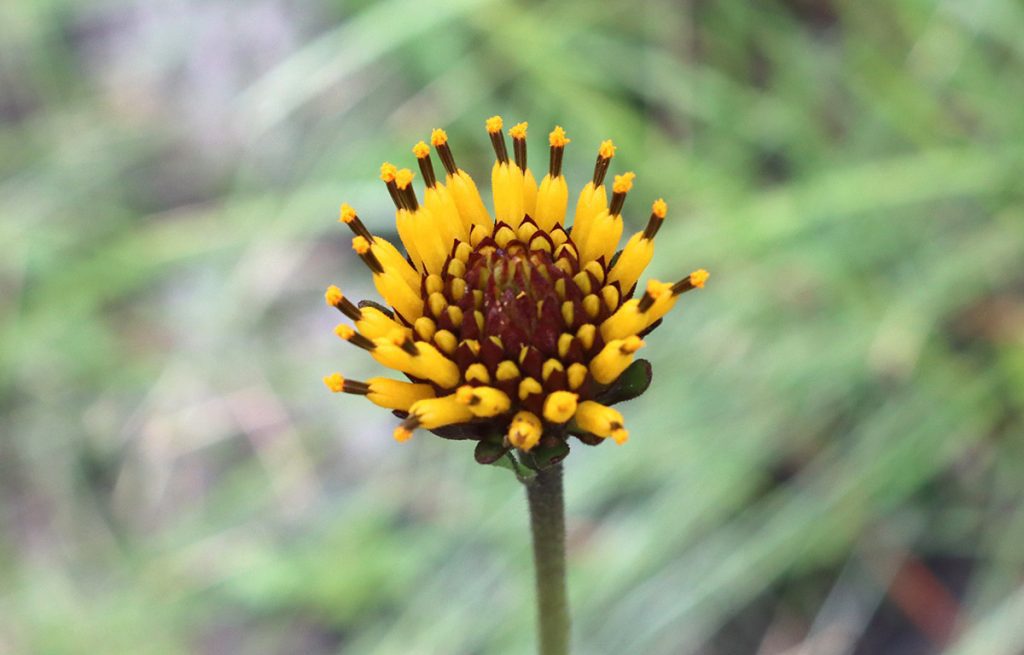
Here’s another state listed (Threatened) wildflower, and one endemic to the Florida panhandle. “There is a blooming Chapman’s crownbeard.” Ryan says. “It only has its disc floret in the center. It does not possess the ray florets around the edge.”
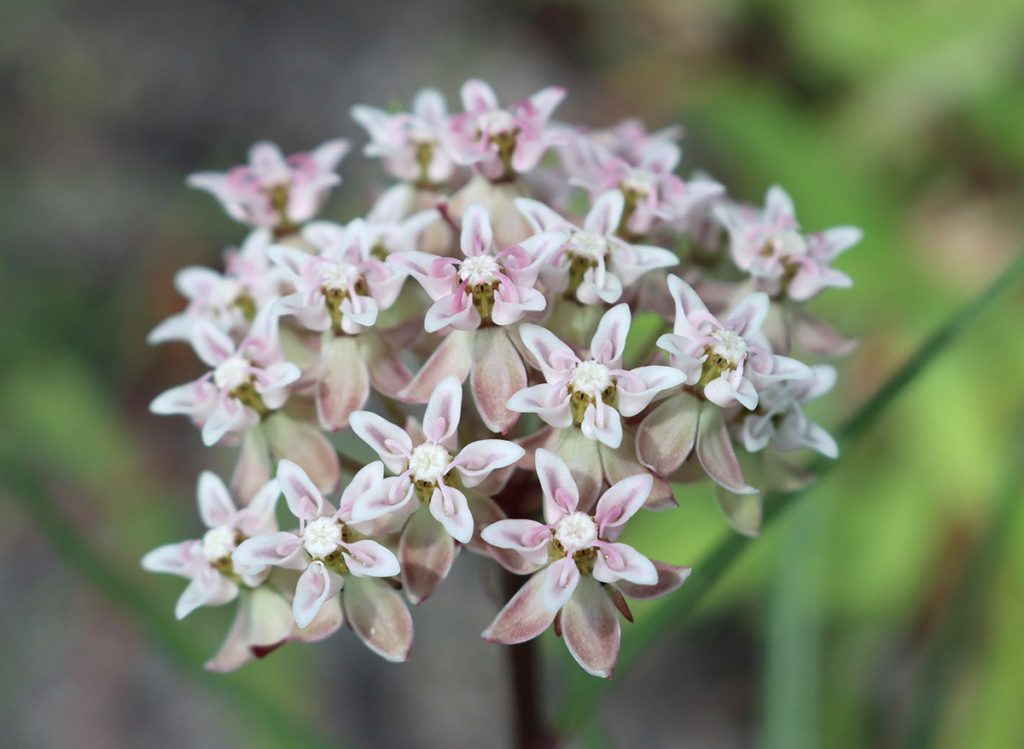
A second milkweed species here on the property. We’ve previously discussed the importance of fire to our local milkweed species, and by extension, monarch butterflies.
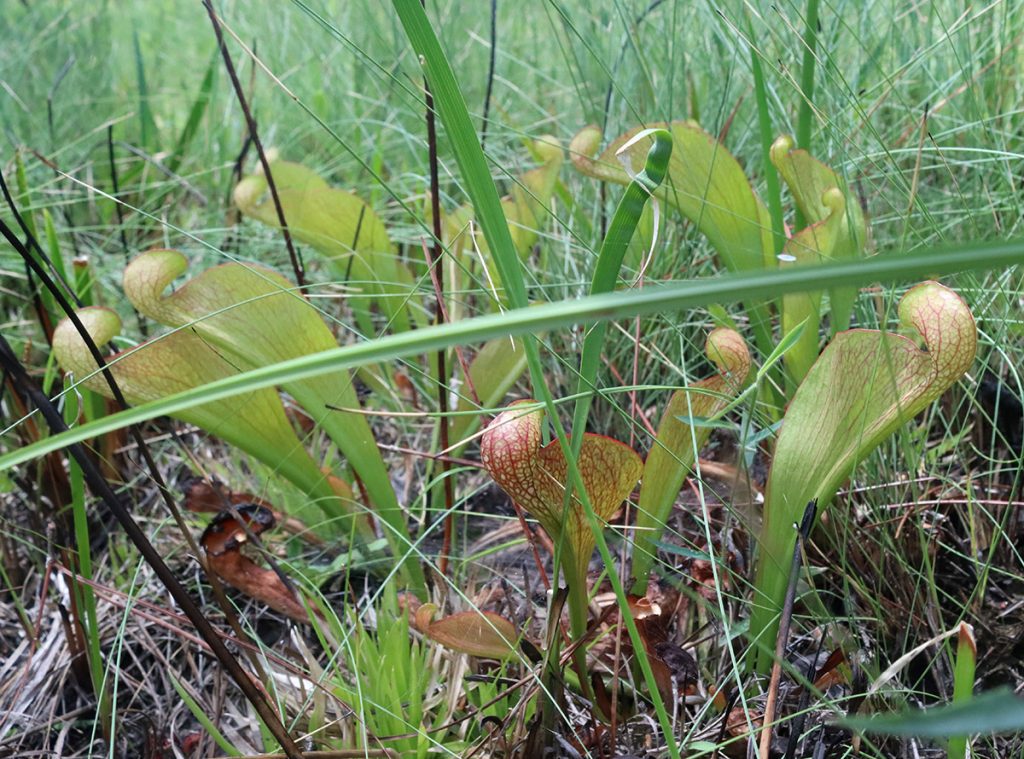
As we approach the tree line, we start seeing more carnivorous plants, including a second pitcher plant species.
“Its leaves or pitchers are kind of in the shape of a parrot head,” Ryan says. “Hence the name parrot pitcher plant.”
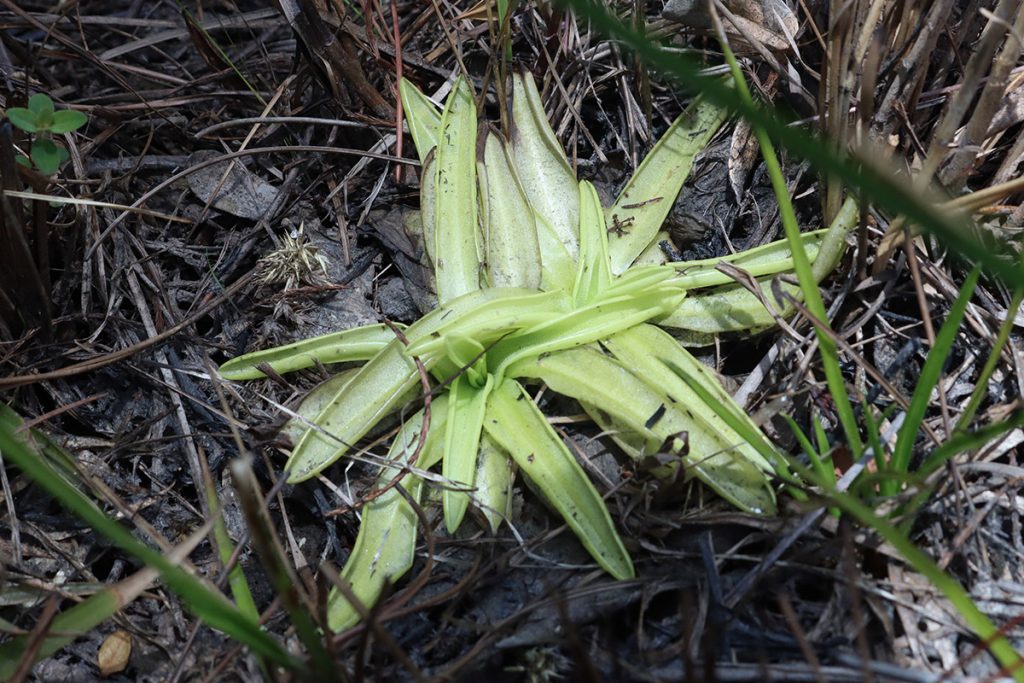
And here, finally, one of the rarest plants in this part of Florida. Godfrey’s butterwort is Endangered in Florida, listed federally as Threatened, and endemic to five panhandle counties.
Where pitcher plants trap insects in their tubular leaves, butterworts’ leaves are a sticky insect trap.
Creepy crawlies of the Apalachicola Lowlands Preserve
Ryan and I are walking along a recently disked firebreak. A front loader drags a trailer with several heavy circular blades (disks) that tear the earth so badly that nothing can grow there. This creates paths where there is no fuel, halting the spread of fire and making it easier to burn the forest one compartment at a time.
Here along this artificial edge, it’s easier to spot certain animals. Ryan sees something that interests him and he lunges to pick it up.
![Six-lined Racerunner (Cnemidophorus [Aspidoscelis] sexlineatus)](https://blog.wfsu.org/blog-coastal-health/wp-content/uploads/2021/09/racerunner-small-1024x576.jpg)
“This is the six-lined race runner.” Ryan says. “I was lucky enough to be able to catch him. Wow. I’m not too old yet! This is the fastest lizard on earth around these parts. And this belongs to a kind of lizard family called the whiptails. Long, whippy tail, extremely fast bodied lizard. It’s a ground dweller.”
The Means family knows a few things about snakes and salamanders and other reptiles and amphibians. Over 50 years ago, Bruce Means first described the Apalachicola dusky salamander, and soon after began decades of work on the eastern diamondback rattlesnake. A few years ago I started covering Ryan and Rebecca’s work releasing striped newts into ephemeral wetlands in the Apalachicola National Forest, in the process learning about the many reptiles and amphibians that live in these ponds.
As we reach Rowlett’s Creek, Ryan points out an ephemeral wetland, and this nice looking water moccasin beside it:
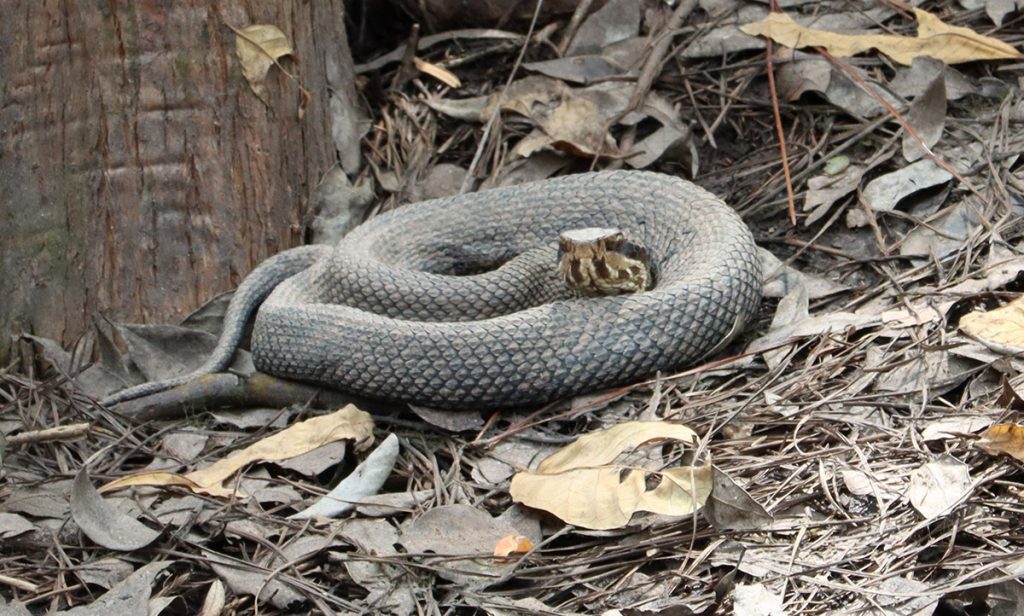
After seeing this large, impressive predator, we head down to the seepage slope where we meet two of North America’s smallest amphibians.
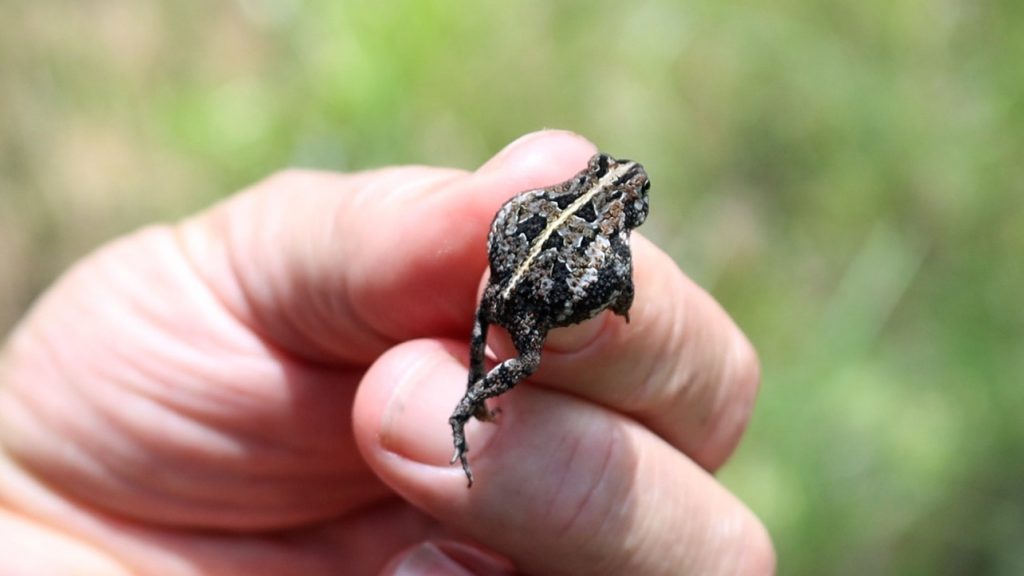
This is North America’s smallest toad, which Ryan finds near the Godfrey’s butterwort. Not far away, Ryan finds North America’s smallest frog.
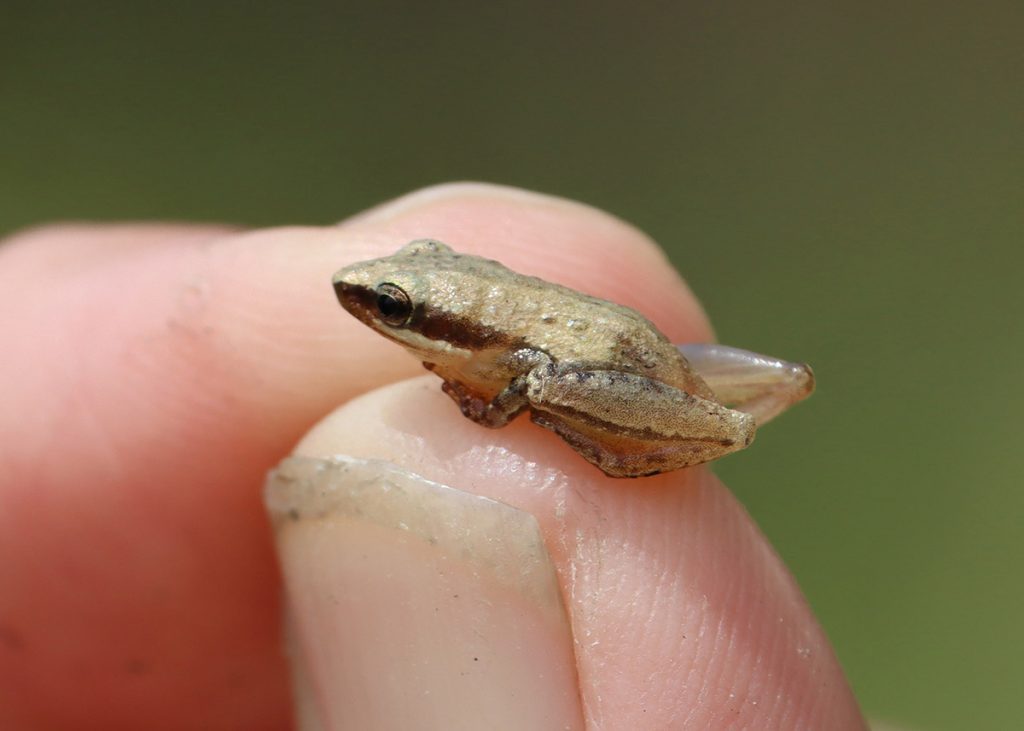
Reconnecting with the Apalachicola River Watershed
Water drains from these flatwoods into Rowlett’s Creek. Rowlett’s Creek flows into the Apalachicola River. The health of this ecosystem affects the water flowing into the river, and the biodiversity of the river corridor.
A little over a week after I’m publishing this post, I’ll be kayaking that river on Apalachicola Riverkeeper’s RiverTrek paddle. When I first did this in 2012, it was my introduction to the river and the habitats around it, and their connection to Apalachicola Bay.
I’ve since spent time exploring all of those habitats: tupelo swamps, steephead ravines, sandhills, the rivers and creeks that flow into and out of the river, the marshes and oyster reefs in and around the bay, and the barrier islands that enclose it. Everything I saw when I kayaked and climbed and hiked these places was colored by that first, epic, five day experience.
Nine years later, these experiences will color everything I see on the river. I’ll be connecting dots in my head with every dig of the paddle or snap of the camera. I’ll be looking forward to returning to a few spots, some of which I haven’t seen in years. As always, there will be surprises. There always are.
And then, RiverTrek will end. I’ll sleep in a bed for the first time in five days, and my mind will fix on some place I saw while on the water…

